The Beginner’s Guide: Film Noir
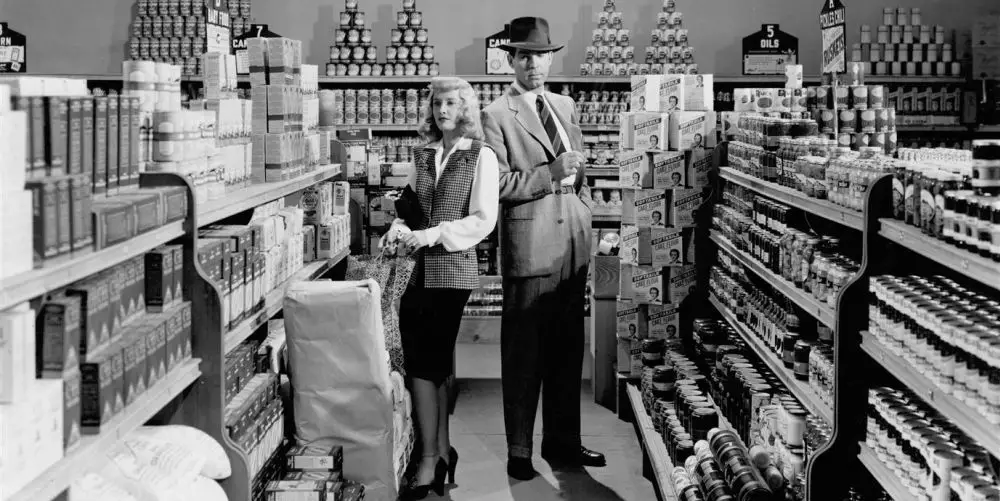
Meaghan is a writer by trade and a film geek…
You probably already know what you’ll see in a film noir. Guys who talk out of the sides of their mouths, calling women “broads” and “dames.” Detectives, crime, forbidden love, doomed lives.
By the start of WWII, American films were no longer being imported into Europe. After a steady diet of Hollywood talkies and musicals, France (in particular) was cut off. And when the war ended they binged on all the movies they’d missed over the past few years.
It was the French who noticed a trend and called it film noir. They honed in on a distinct style that had infiltrated the American silver screen, seemingly unconsciously. Rather like a dame who just gets under your skin.
A few hallmarks of film noir to watch for…
Low-key lighting
This is just a fancy way of saying there is not much lighting on set. The Great Depression and then WWII meant even the most successful studies had tight budgets. And an insatiable audiences in thousands of movie theaters demanded new pictures every week. The studio system had to grind out films quick and dirty.
Film noir does a lot with a little. A couple of bright lights create dark shadows. Directors used this to great effect, putting angular actors in sharp shafts of light. The cinematography of film noir embraces the black and white outcome.
Femme fatale
The slinky, slippery woman who traps the male hero with her wily ways is the fatal female. She is Eve and the serpent in one.
This woman represents an undercurrent of anxiety from the war. The Rosie the Riveter type was a danger to the social structure when GIs returned home. Projected on film, these capable females were portrayed as conniving and dangerous. Ironically, they become a new type of heroine.
The Everyman is trapped, or being held down
It might be a wrongfully convicted felon, a misunderstood dock worker, an unemployed private detective, or a mother-turned-businesswoman. The protagonist is met with a conflict that seems like a cosmic joke. Society is working against them somehow, and the setting reflects their trapped feeling. It’s often a gritty, urban world, a concrete rabbit warren that is seemingly inescapable.
They’re cynical and yet they still seek justice even on the smallest scale. An insurance company executive uncovers a murderous plot, and yet the audience roots for the homicidal wife and the hapless salesman who gets caught in her web.
Not sure where to start? Try these classic films that just about everyone agrees on.
The Postman Always Rings Twice (1946, Tay Garnett)
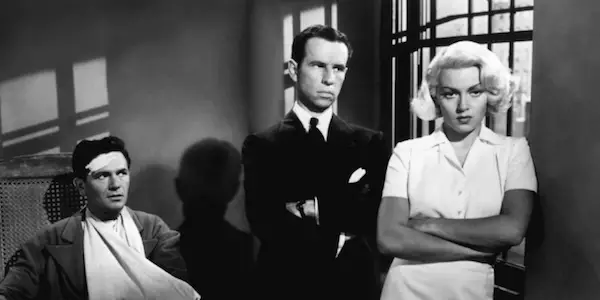
Based on the novel by James M. Cain, and starring rugged John Garfield and saucy Lana Turner, the story of The Postman Always Rings Twice revolves around an unhappy wife who takes up with a drifter. The two conspire to kill her husband (a common theme), which becomes much more complicated than they planned.
Part romantic drama, part murder mystery, part courtroom drama, there is no lack of questionable morality. Characters grapple with inner turmoil as much as societal mores.
Double Indemnity (1944, Billy Wilder)
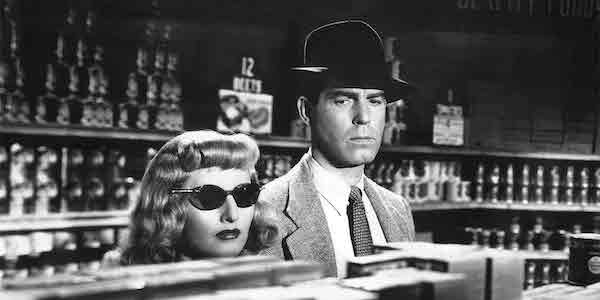
Long before he was the beloved absent-minded professor, Fred MacMurray was getting into another kind of mischief. Barbara Stanwyck calls the insurance salesman to take out a policy on her husband. The two hit it off a little too well. After helping her come up with a “perfect murder” that the insurance company won’t look too closely at, he realizes he is in too deep.
Of course, by then it is too late. The cast of Double Indemnity is bolstered by workhorse Edward G. Robinson, a common character actor in noirs.
Mildred Pierce (1945, Michael Curtiz)
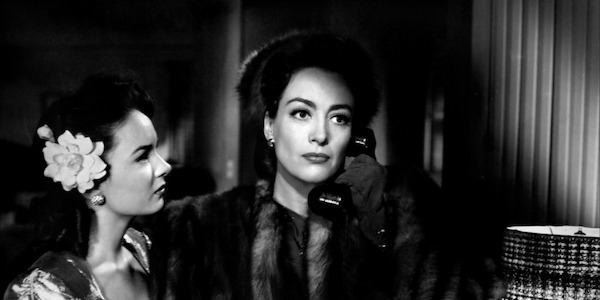
Joan Crawford won an Oscar for her performance in this classic crime drama, Mildred Pierce (the film was nominated for five more). Also based on a novel by James M. Cain, it traces the rise and fall of a single mother who is self-made when she buys and runs a successful restaurant, something she manages better than her spoiled daughter.
Watch for themes on what it means to be a woman in America as well as some beautiful lighting.
The Asphalt Jungle (1950, John Huston)
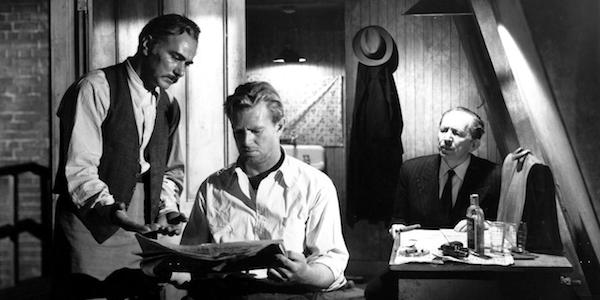
The plot of The Asphalt Jungle is built around a jewel heist, one last job that will make them all rich enough to quit the game forever. Sterling Hayden is drawn into the theft with the promise of so much money he can leave the dark, decrepit city and buy his father’s horse farm in the country.
There are numerous crises of conscience, especially for Hayden and a luminous Jean Hagen. It’s also notable for a small role with then-unknown Marilyn Monroe.
The Maltese Falcon (1941, John Huston)
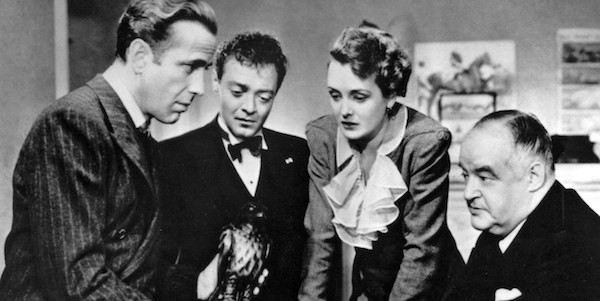
Also directed by John Huston, The Maltese Falcon is a suspenseful drama that features private detective Sam Spade, played by a dry Humphrey Bogart. Spade is ostensibly hired to search for a missing sister but is quickly pulled into a case with multiple murders and no clear villain.
Watch for a particularly claustrophobic scene in a hothouse. It also features stark and unsettling performances by Sydney Greenstreet and Peter Lorre.
Laura (1944, Otto Preminger)

It’s hard to think of a deadlier female than Gene Tierney as Laura Hunt in Laura. From the outset, she has already been killed and it is up to Dana Andrews to discover her murderer. Gorgeous, successful, and ethereal, the detective becomes obsessed with the memory of a woman he never knew as he seeks to find the truth.
Told in flashbacks, and with voice-over and interesting cinematography, it is a very approachable example of noir.
The Third Man (1949, Carol Reed)
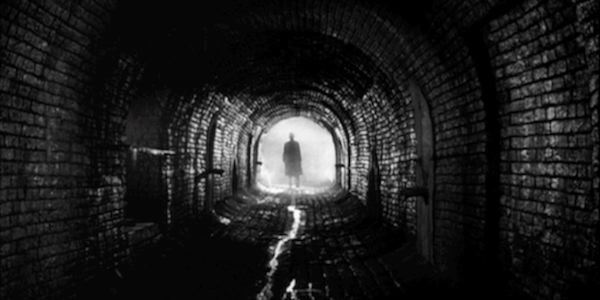
This Carol Reed film is a spy thriller set in Vienna during the Allied occupation. The war is over and several countries claim areas of the city. Affiliations are fluid and dangerous. Joseph Cotten unwittingly enters the den of thieves at the invitation of his friend Orson Welles. What greets him instead is his friend’s funeral and a fraught city.
Noted for its deep focus and wild camera angles, The Third Man won the Oscar for best black and white cinematography.
The Blue Dahlia (1946, George Marshall)
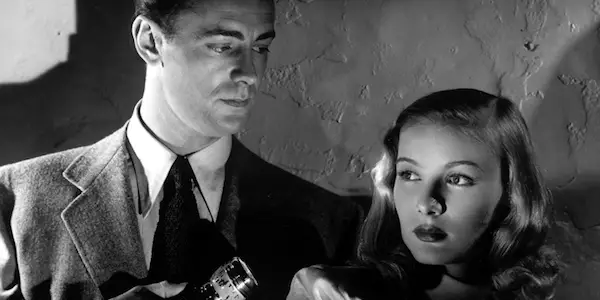
The Blue Dahlia takes an unflinching look at the real struggles in America after the war — injured, shell shocked soldiers who return to a home that has changed beyond recognition and wives who no longer recognize their damaged husbands.
Alan Ladd and Veronica Lake make a dynamite pair, each dealing with the fragile veneer of identity. Watch for stunning night photography.
The Stranger (1946, Orson Welles)
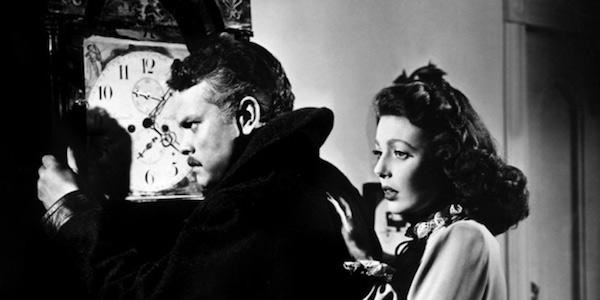
Tapping into the post-War fear in America, The Stranger revolves around the search for a Nazi war criminal loose in Connecticut. Orson Welles behaves suspiciously and his wife Loretta Young even begins to suspect he is the Nazi in hiding. Edward G. Robinson is the hunter, looking for a man with a mania for clocks.
The film also served an informational purpose, showing the audience images from the Holocaust and concentration camps.
Shadow of a Doubt (1943, Alfred Hitchc*ck)
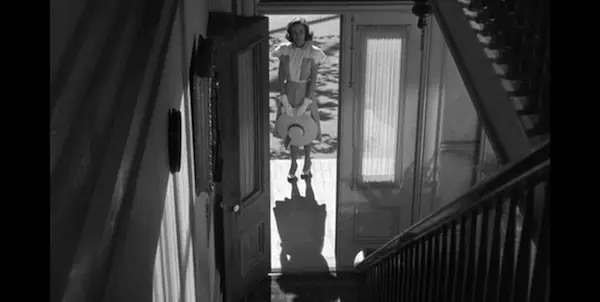
In Shadow of a Doubt, Joseph Cotten is Charlie, beloved uncle to Teresa Wright. He returns to stay with the family but she begins to suspect that his visit is more than a friendly call. As she discovers that he is wanted for murder, she becomes the next on his victim list.
It is Alfred Hitchc*ck‘s only real noir film (though many of his films had aspects of it). He uses deep shadows and glowing backlight to make Wright appear saintly, while Charlie lurks in the shadows ready to pounce.
These are just a few of the characteristics to look for. Film noir is a very broad term and some of the best minds in cinema still argue about the finer details. Dark alleys, sympathetic bad guys, strong and dangerous women, stark lighting, trapped characters and dim settings are all signs you might be watching one.
Do you have a favorite film noir? What would you add to the list?
Does content like this matter to you?
Become a Member and support film journalism. Unlock access to all of Film Inquiry`s great articles. Join a community of like-minded readers who are passionate about cinema - get access to our private members Network, give back to independent filmmakers, and more.
Meaghan is a writer by trade and a film geek by choice. She has a special love for classic and vintage film. She is also a photographer, book reviewer, cruciverbalist, anglophile and cryptozoologist.












